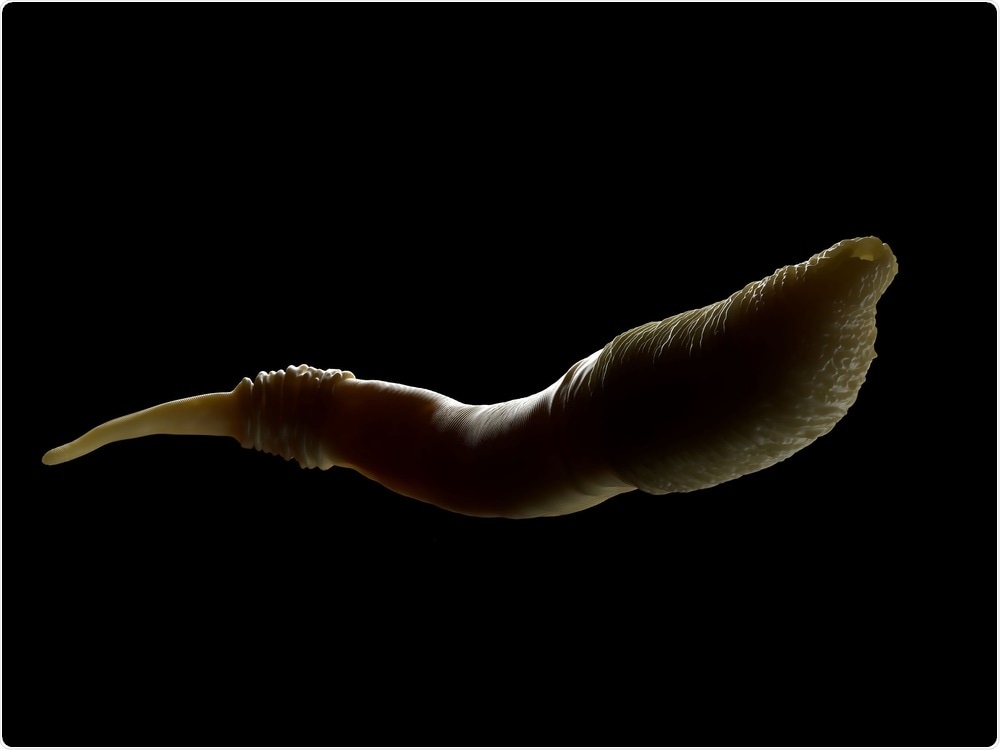Researchers at EMBL's European Bioinformatics Institute (EMBL-EBI), the University of Dundee and the Wellcome Sanger Institute analyzed over 2700 genomes from C. elegans worms in order to better understand the causes of mutations.

Image Credit: royaltystockphoto.com/Shutterstock.com
Their findings, published today in Nature Communications, characterize how DNA mutations result from the combined action of DNA damage and inaccurate DNA repair mechanisms.
A cell's DNA is constantly exposed to physical and chemical stresses - or genotoxins - that can damage it and cause mutations. However, cells have a myriad of repair mechanisms to fix DNA lesions soon after they arise.
Occasionally, the restorative repair process fails, either by making extra errors or by failing to detect the DNA lesions altogether. This leads to mutations, which are the root cause of cancer.
Many genotoxins, like those found in tobacco smoke, were thought to cause a unique suite of mutations in the genome, recognizable as a mutational signature.
Detecting such signatures in cancer allows scientists to trace what caused the damage in the first place, and aid prognosis and treatment by pointing to certain vulnerabilities,"
Nadezda Volkova, Ph.D. EMBL-EBI.
However, many mutational signatures observed in cancer genomes do not seem to relate to any single genotoxin and others appear to result from a combination of factors. To understand the origin of these signatures, Volkova and colleagues tested the effects of more than 150 combinations of twelve genotoxins on C. elegans worms whose DNA repair mechanisms were either unaltered or faulty.
The scientists experimentally demonstrated that mutational signatures result from a combined action of DNA damage and specific repair mechanisms.
DNA repair and mutational signatures
"A lot of DNA alterations that we observed in our study occur in human cancer as well, but we found that mutational signatures are more variable than we previously thought," says Volkova.
The scientists found that different types of DNA alterations induced by the same genotoxin are often fixed by different DNA repair pathways, some error-free, others error-prone. As a result, a single genotoxin may leave a variety of mutational signatures at various rates, depending on the repair process.
While most DNA repair prevents mutations, it can also cause them. For example, Volkova and colleagues demonstrated that one particular mechanism, called translesion synthesis, is responsible for the majority of base mutations caused by genotoxin exposure as a trade-off for more severe and potentially more deleterious mutations.
While many of these minor mutations may be harmless, in humans they can increase the probability of developing a tumor.
In cancer genomics, there is an implicit expectation that for every signature, one could find a single cause: our analysis challenges that expectation. Behind each pattern, there are at least two unknowns: the damage that occurs and the repair capacity of the cell,"
Moritz Gerstung, Group Leader at EMBL-EBI
Bringing together cancer genomics and DNA repair
While the molecular mechanisms of DNA repair are very well-established, the exact types and frequency of mutations they can generate remained unclear until high-throughput sequencing entered the scene.
This study combines whole genome sequencing with an experimental screen to better understand the causes of mutational signatures. The results have potential implications for cancer research, diagnosis, and treatment.
"Understanding the interplay between DNA damage and repair helps to better gauge the risk of cancer predisposition, and to understand the response to cancer treatment," says Bettina Meier, Senior Research Associate at the University of Dundee.
Mutational signatures have become a pillar of cancer genome analysis because they may shed light on the carcinogens cancer cells have been exposed to, and the repair mechanisms that were perturbed.
However, not all observed mutational signatures and their individual facets are fully understood. An experimental approach ensures that the observed patterns are the direct consequences of the conditions set by scientists. It also helps understand how multiple DNA repair processes jointly shape mutational signatures.
"It took years to generate all these repair defective C. elegans, to systematically expose them to a panel of genotoxins, and to prepare, sequence, and analyze their DNA. It is great to see that experimental work on C. elegans is directly relevant for interpreting cancer genomes," says Anton Gartner, Group Leader at the University of Dundee, recently appointed Associate Director of the IBS Center for Genomic Integrity at UNIST Ulsan, South Korea.
European Bioinformatics Institute (EMBL-EBI)
The European Bioinformatics Institute (EMBL-EBI) is a global leader in the storage, analysis, and dissemination of large biological datasets. We help scientists realize the potential of 'big data' by enhancing their ability to exploit complex information to make discoveries that benefit humankind.
We are at the forefront of computational biology research, with work spanning sequence analysis methods, multi-dimensional statistical analysis, and data-driven biological discovery, from plant biology to mammalian development and disease.
We are part of EMBL and are located on the Wellcome Genome Campus, one of the world's largest concentrations of scientific and technical expertise in genomics.